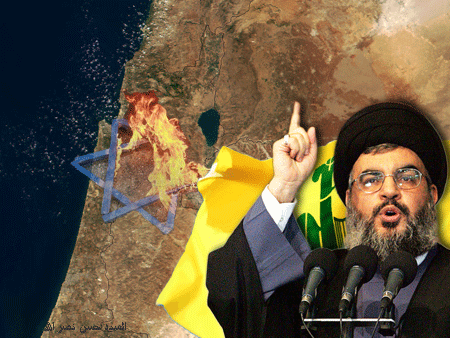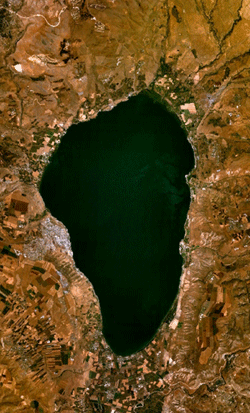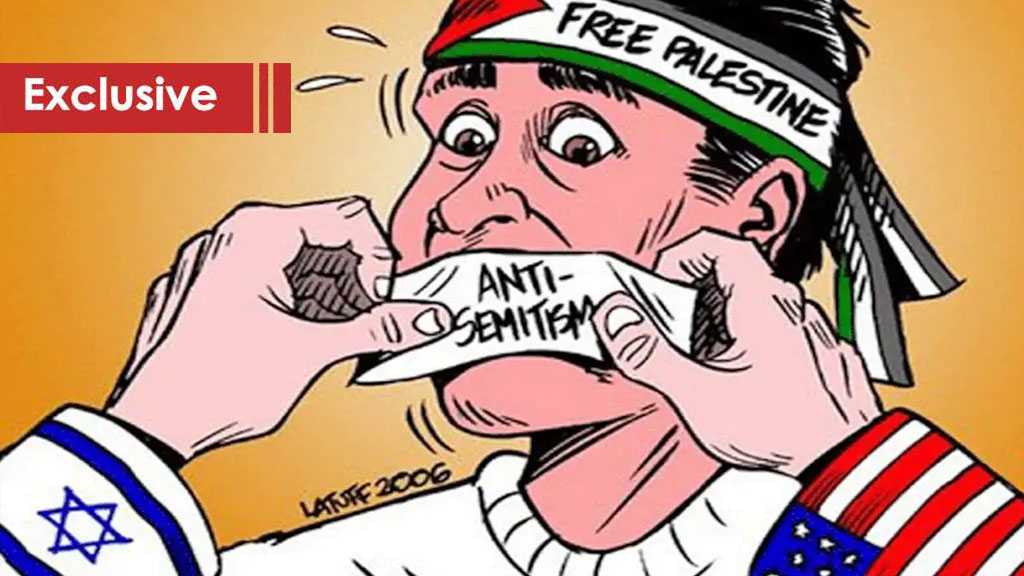
Galilee, a Strategic Treasure within Hizbullah’s Reach

Will "Israel" wish if Sayyed Nasrallah didn't' threaten with Galilee?
"We might enter Galilee in any next war," Hizbullah Secretary General, Sayyed Hassan Nasrallah, avowed in his last interview.
As soon as he declared Galilee a target during any likely confrontation with the enemy, analyses and anticipations about the scenario and scene of the military battle with "Israel" started to stream. The maneuvers of the Zionists, which have never ceased, shall not do today. The Resistance is greatly at ease, preparing "on calm fire" its substantial "Israeli" targets inside the occupied territories.
This is today's headline and event.

It is the second time when Sayyed Nasrallah sets Galilee as an inevitable target for the Resistance's field operations in case "Israel" attacks Lebanon. Then why does advancing into Galilee frighten the Zionists?
"It is a first in the history of the "Israeli"-Arab conflict and since the establishment of the Zionist entity. The battle was transferred into Occupied Palestine, the land of the enemy, unlike what usually happened in the past wars, when the enemy was highly relying on fighting on the territory of its adversary," Saleh Hajj Suleiman, former General at the Lebanese-Army Command-Guidance Directorate, maintains.
This is why the "Galilee equation" is seemingly quite different from any previous military equation.
For his part, Sakr Abu Fakhr, a specialist in Palestinian and "Israeli" affairs, sees that this first is just as important, owing to the strategic significance of Galilee on both the geographical and security levels.
In fact, whoever takes over Galilee is automatically able to take over South Lebanon and plains surrounding Tabaria Lake, and vice-versa; liberating any part of Galilee via the Lebanese territories shall petrify "Israel" since most of the settlements are built nearby the Lebanese borders.
The Location of Galilee
According to Abu Fakhr, Galilee is deemed of a remarkable particularity. It is an expansion of Jabal Amel, with a geographical nature similar to that of Lebanon's mountains.

From the side of Acre, it comprises a spectrum of mountains overlooking the Mediterranean. It also overlooks Golan from the eastern side at Tabaria Lake. It is also located in a spot just in the middle of the Palestinian, Lebanese, and Syrian territories, all interrelated.
Hajj Suleiman explains that Galilee constitutes the center of "Israel's" economic greed, as it contains a huge water resource, just like Shebaa farms and Golan. Abu Fakhr adds that it is through Galilee that water lees of Jordan, Sharia, Banias, Hasbani, and Wazani rivers combine.
Galilee extends throughout an area of 3000 to 4000 square kilometers, with al-Nassera (Nazareth) as its capital, the cradle of Jesus. Akka (Acre), Safed, Kfar Yassin, and Abu Sanan are Galilee's key historic Palestinian cities, and Nahariya, Meskafaam, Haifa, Upper al-Nassera (Nazareth), Mtolleh, and Maalout are the most famous Zionist settlements therein. Abu Fakhr stresses that the beautiful and mountain nature of Galilee drove the "Israelis" to make of it a salient tourism region.
Sensitive Targets
The strategic importance of Galilee that would be advantageous to the Resistance during the next war with the enemy is the presence of the biggest military wiretapping base in the region and specifically on top of Mount Hermon or Jabal el-Sheikh, where the Zionist army taps on all the neighboring countries, even Iran. Through this base, "Israel" can also keep tabs on a number of countries, including Damascus and the Lebanese territories until Rashaya and Barouk and even South Lebanon.
Moreover, big plants abound in west Galilee, especially throughout plains surrounding Akka (Acre) and Haifa. Abu Fakhr notes that Haifa port comprises an oil refinery, which makes of it, along with the port, a key strategic target. There are also many air bases and small airports as well as substantial "Israeli" military panels in the northern regions of Galilee.
Therefore, Galilee is such a paramount geographical and strategic spot on the water, security, and military levels, and it is now within the reach of the Resistance's rockets.
Factors of Confidence in the Supremacy of the Resistance
The Resistance is confident about its strength. It relies on possessing capacities that allow it to reach strategic targets throughout Occupied Palestine especially that "Israel" has a large queue of military, industrial, and economic facilities which it cannot hide or transfer. Hence, these are fixed targets for Hizbullah at any time. This is how Hajj Suleiman sees the Resistance's military supremacy over the "Israeli" enemy.

Nowadays, entering Galilee has become very likely, basically owing to July 2006 battles, when Hizbullah could face the enemy in the outskirts of Aita Shaab, where "Israeli" tanks couldn't cross their limits and were demolished in Khiyam plain and Wadi Hojeir.
An evaluation of the performance of the Resistance in 2006 indeed shows an excellent on-the-ground faculty in penetrating the frontiers of the enemy. Hajj Suleiman rakes up what happened in Bint Jbeil in that very year, when the Resistance was besieged after the Zionist soldiers attempted to lure combatants and drag them out of the area; Hizbullah reinforced its presence in the city and brought in more fighters, hence putting the enemy in such a difficult situation.
Hajj Suleiman maintains that the Resistance is capable of penetrating the enemy and easily reaching Galilee, something that the "Israelis" have taken into account in any likely confrontation with Hizbullah. Building on this, the occupation authorities evacuated in 2006 northern colonies despite the well immune and equipped shelters.
A battle of Wills
Hajj Suleiman terms the next war as "the battle of wills: who breaks the will of the adversary wins," because the Resistance will not venture into any classical military operation and open a front-to-front attack. The enemy does not resort to defense. It rather depends on attacking and deep and far-going penetration, which means that this front is weak, enabling Hizbullah to sneak into settlements and occupied territories and confuse the Zionist army. Thus, Hizbullah is indeed capable of maneuvering and transferring its rockets outside the "Israeli" targets bank just before the battle. It can also retaliate immediately, which grants it an effective deterrence power.
Hajj Suleiman concludes that Sayyed Nasrallah's threats are hence highly credible among the Zionists before friends and hesitating "brothers." He affirms that the Resistance will not stand cross-handed before "Israel's" detention of the most powerful arsenal in the Middle East, where it used to saddle the Arab countries with big losses due to anticipatory air strikes. He also avows that "Israel" can certainly not throw the Resistance out of the battle, not now, not in the future.
Closely looking into Hizbullah's messages to the enemy brings forth an equation of deterrence balance in the region, an equation that Sayyed Nasrallah has just anchored with only few words that ensure the certain liberation of lands come what may.
Source: al-Intiqad, translated and edited by moqawama.org



